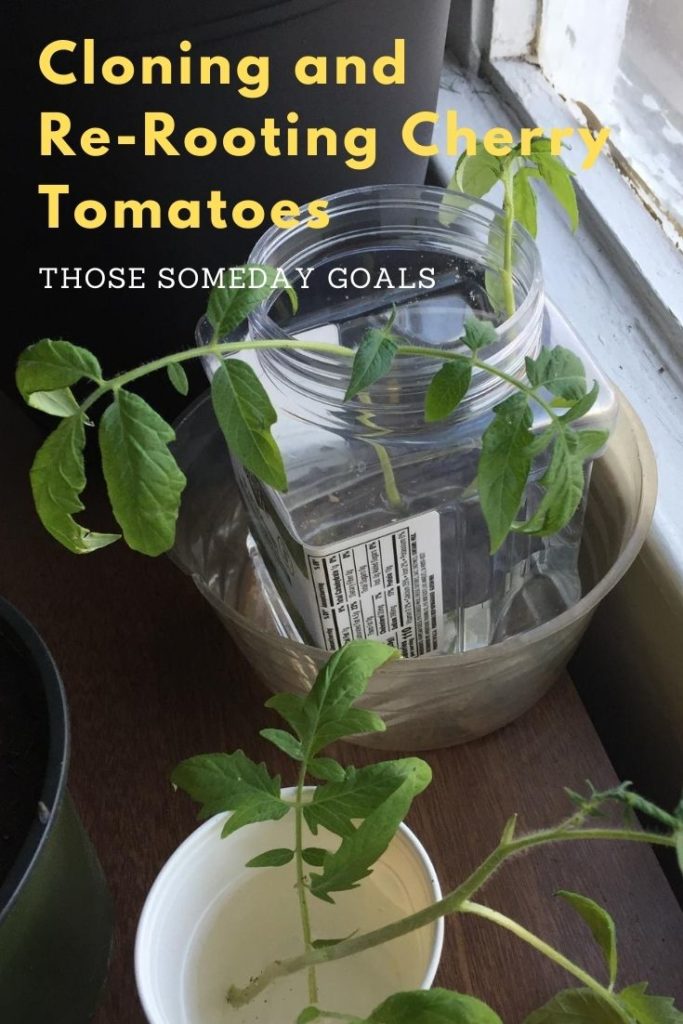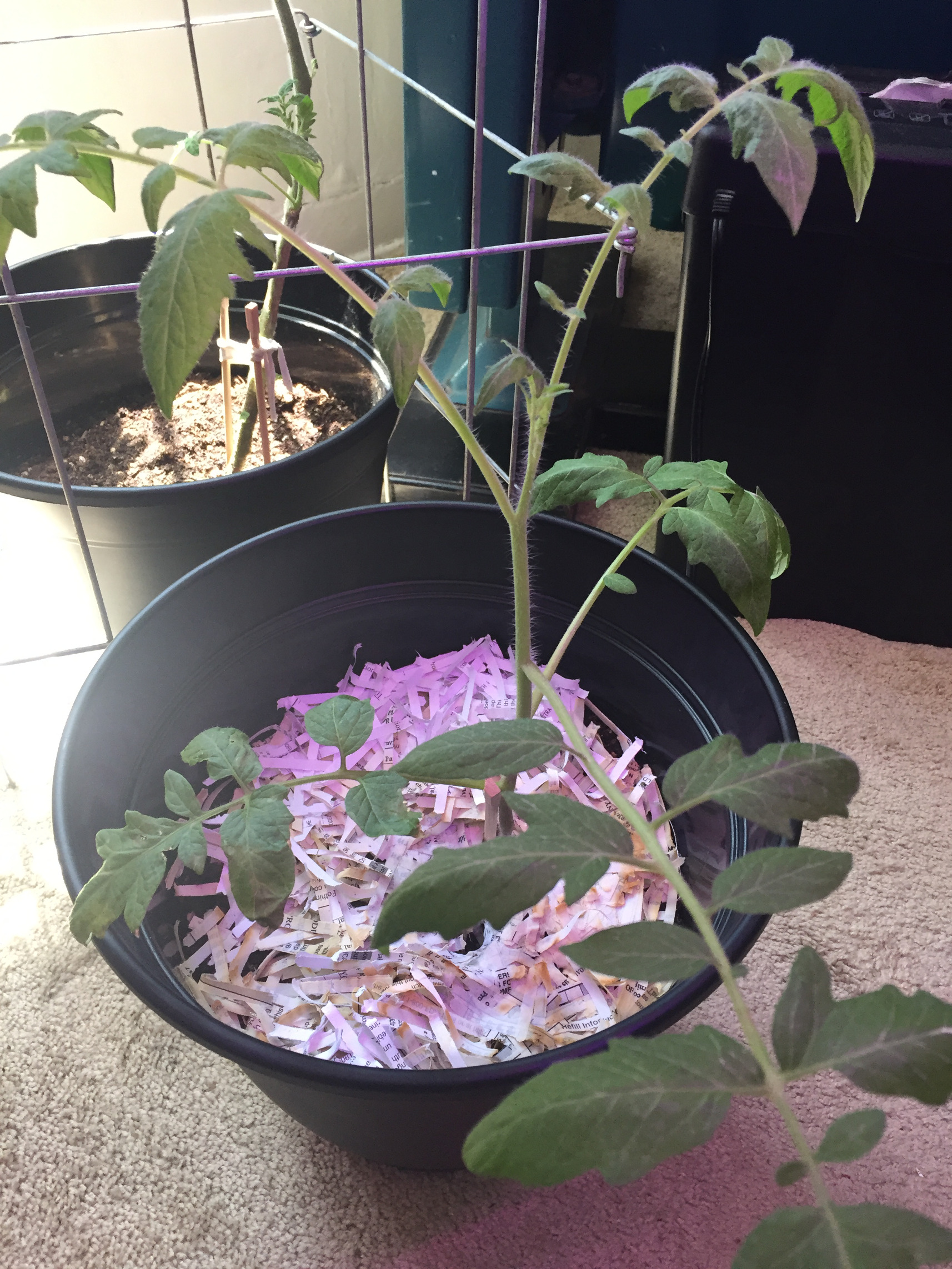You can easily clone cherry tomatoes from cuttings even in an indoor container garden. I know it sounds like a lie, but it is true. In fact, the second plant cloned from the cuttings may end up thriving more in its new plant than the original plant.
How to Clone and Re-root Cherry Tomato Plants in Pots
1. Snip the cherry tomato plant suckers either from the main stem
2. Cut away the original root, if you are re-rooting the entire plant
3. Place the clean stems in a water container
4. Keep the container away from full sun (and heat), but give them light
5. Change the water every few days
6. Watch the roots grow (you’ll see the cherry tomato plants perk up within 48 hours and start to grow roots in days)
7. After 7-10 days, transplant the cloned or re-rooted original plants in nitrogen-rich soil
8. Water them well, as the transition from full water to the dirt will be a shock
9. Move the newly potted plant into direct sun, or a grow light
10. Watch the new cherry tomato plants thrive in your container garden pots
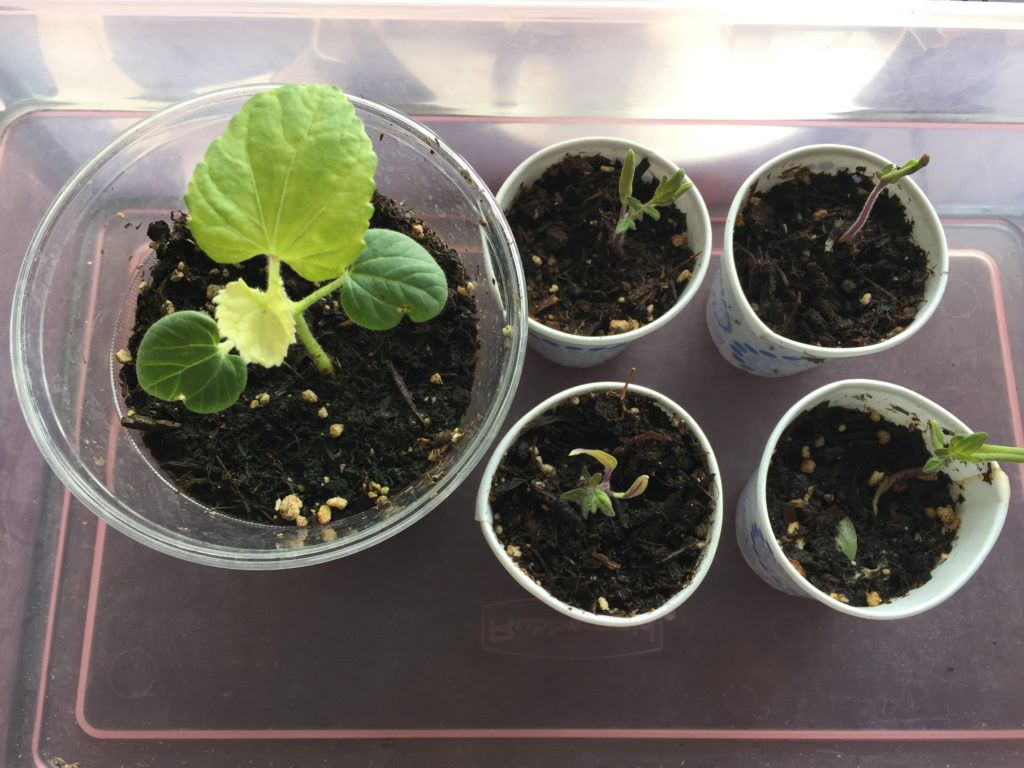
The Tomato Seedlings Arrived
You may have read our recent blog about growing tomatoes in pots in our indoor container garden (aka our office). Three of the seedlings we bought were for cherry tomatoes, and like the larger plant, we looked at the tiny paper cups in wonder and consternation.
Each day we watered the cups and kept them as close to the windows as possible. While we were unable to give them full sun, we had bright, warm days that offered at least 50%, and we crossed our fingers. They grew slowly, but by May they had outgrown the paper cups, and we were ready to transplant them into their larger pots.
And then, disaster struck. All three of the plants collapsed. They were in full-wilt mode. I did some research that said it was either because we watered them too much or not enough. Well, that was not really helpful. I tried to water less, but they didn’t perk up. The only thing that gave me hope was that the leaves were still soft. They were just entirely limp.
Cloning and Re-Rooting Our Cherry Tomato Plants
It was time for radical measures. So, I cut the plants away from their original roots, and in one case, separated tomato suckers, and began to clone and re-root the cherry tomatoes. I figured that if this move failed, we were no worse off than before I tried the technique.
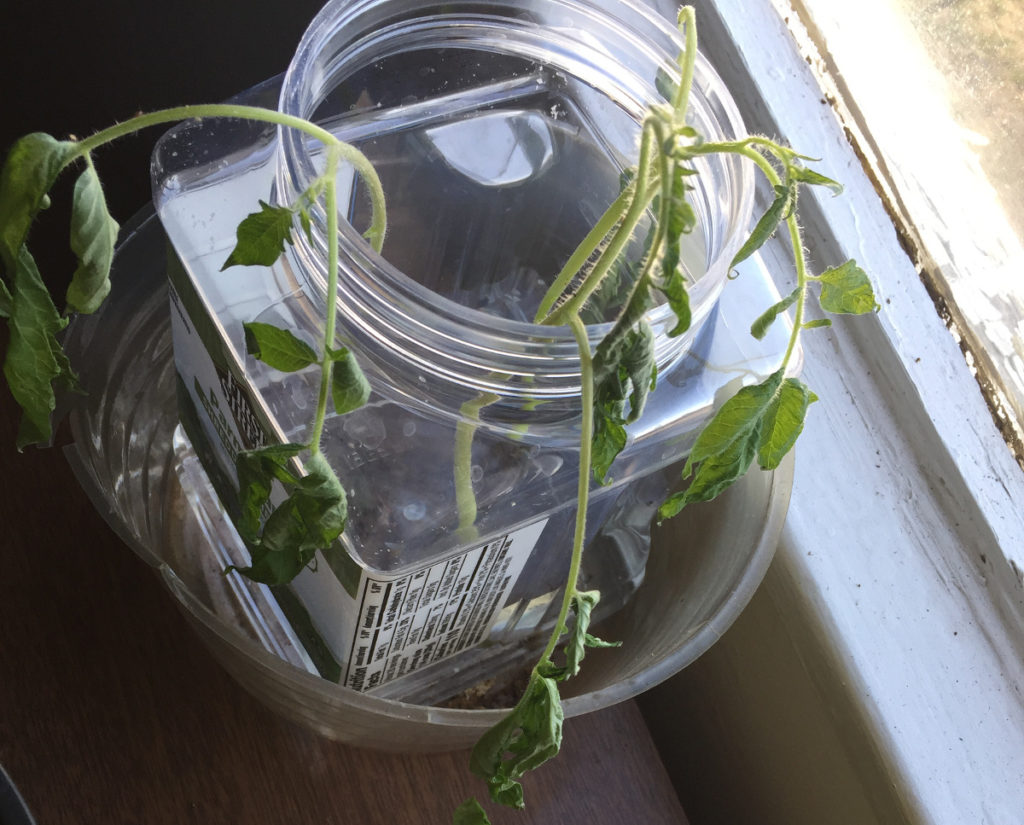
We recycled a plastic container that once held parmesan cheese as a clean basin. It was filled with water, and the cherry tomato cuttings were placed inside. While the container was placed near a window, it didn’t receive full light, and (luckily) we were going through the cooler temperatures of early July (which sounds strange, but that’s how Los Angeles works). And then we waited.
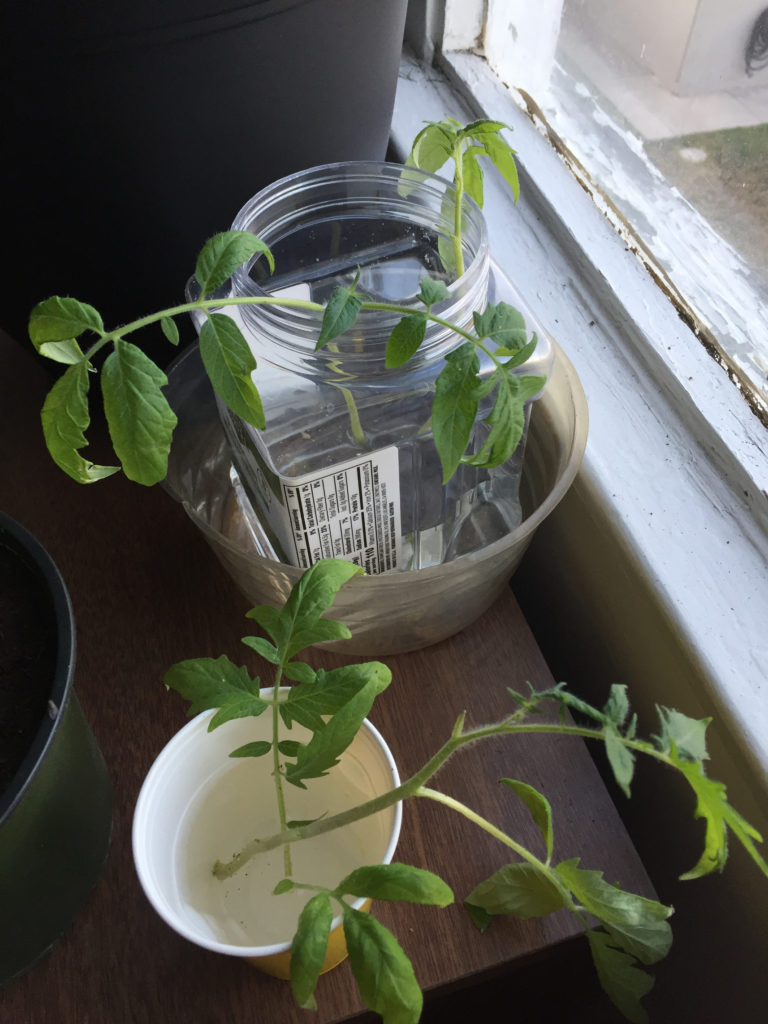
Within 24 hours, we started to see the leaves spring back to life. Within a week, we could see tiny white roots breaking through the snipped stems. Within two weeks, the roots were growing well enough that it felt like it was time for transplanting.
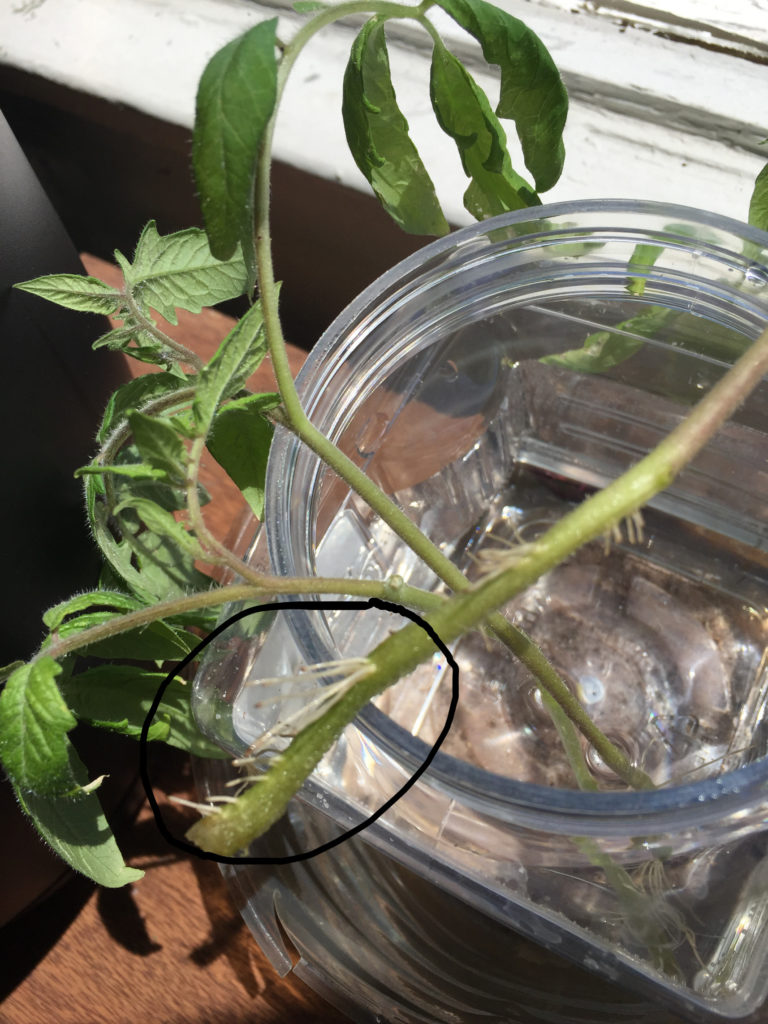
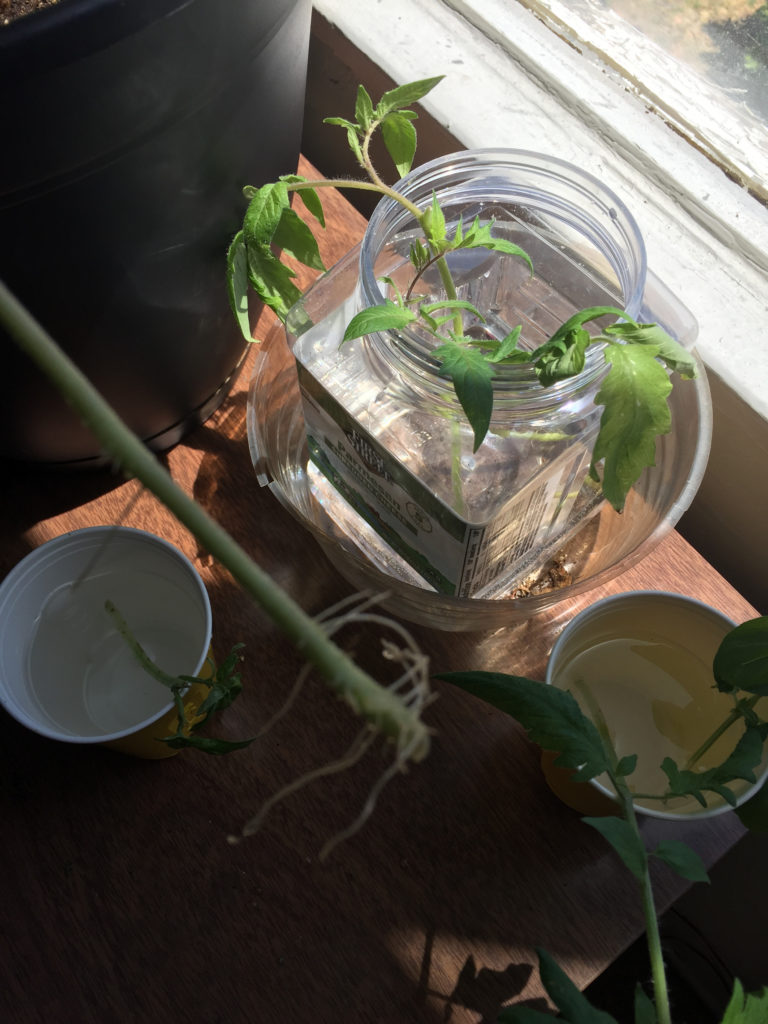
Transplanting Cloned Cherry Tomato Plants
We decided to put the smaller plants (including one that was a clone from a sucker) into one large plastic pot and the larger re-rooted plant into a container of its own. All of them were stake-supported with recycled chopsticks. We used nitrogen-rich, organic soil, and added a layer of mulch made from shredded white paper.
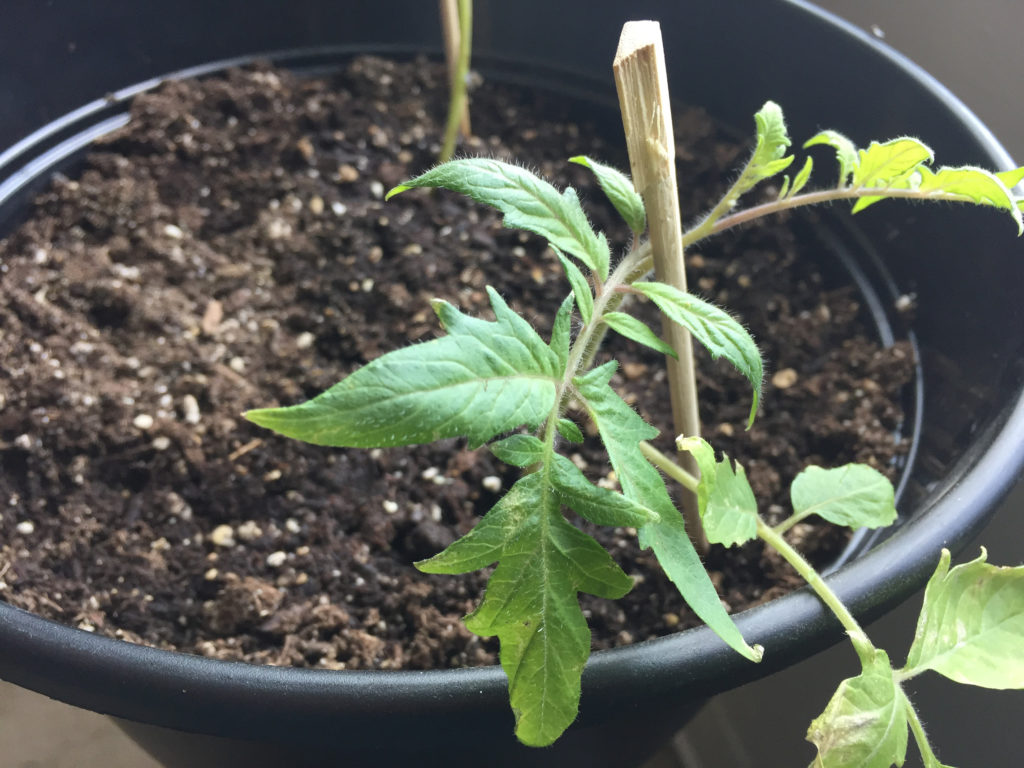
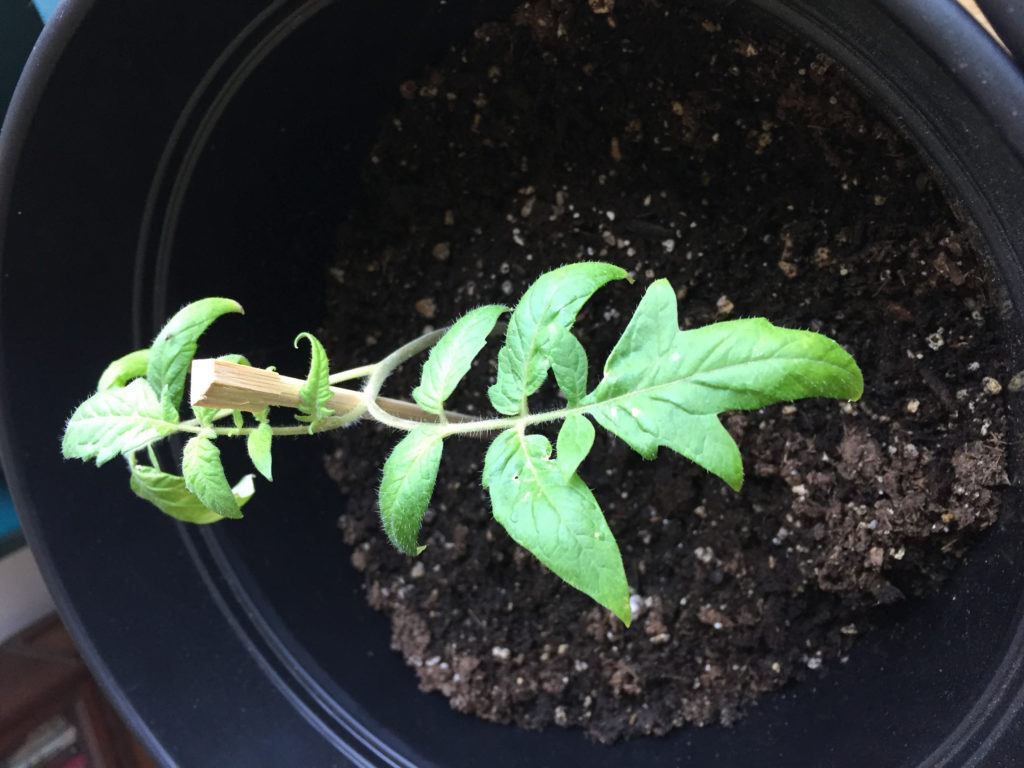
And voila! All three cherry tomato plants have gone from wilted disasters to thriving. They are currently living by our office window, but we have our small grow light angled in their direction to give them some added light. We are also watering them significantly more than we did during our first attempts. If they perked up during their time in the water-only container, it seemed likely that they would need a lot to recover from the shock of moving from the water into the dirt-filled pot.
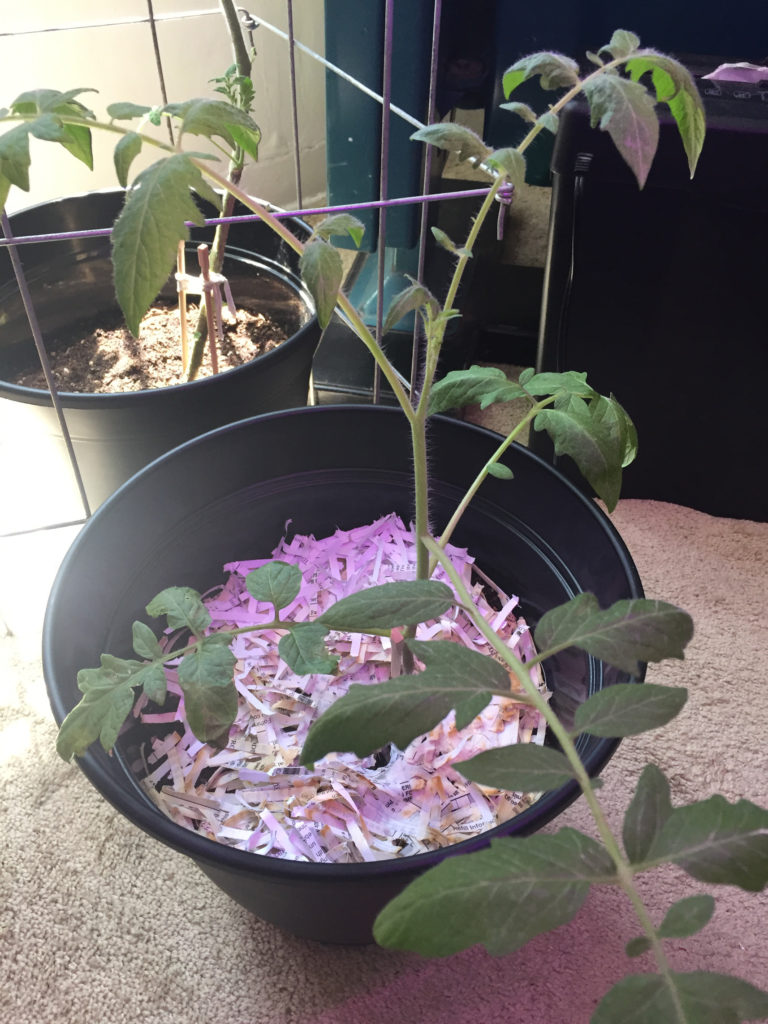
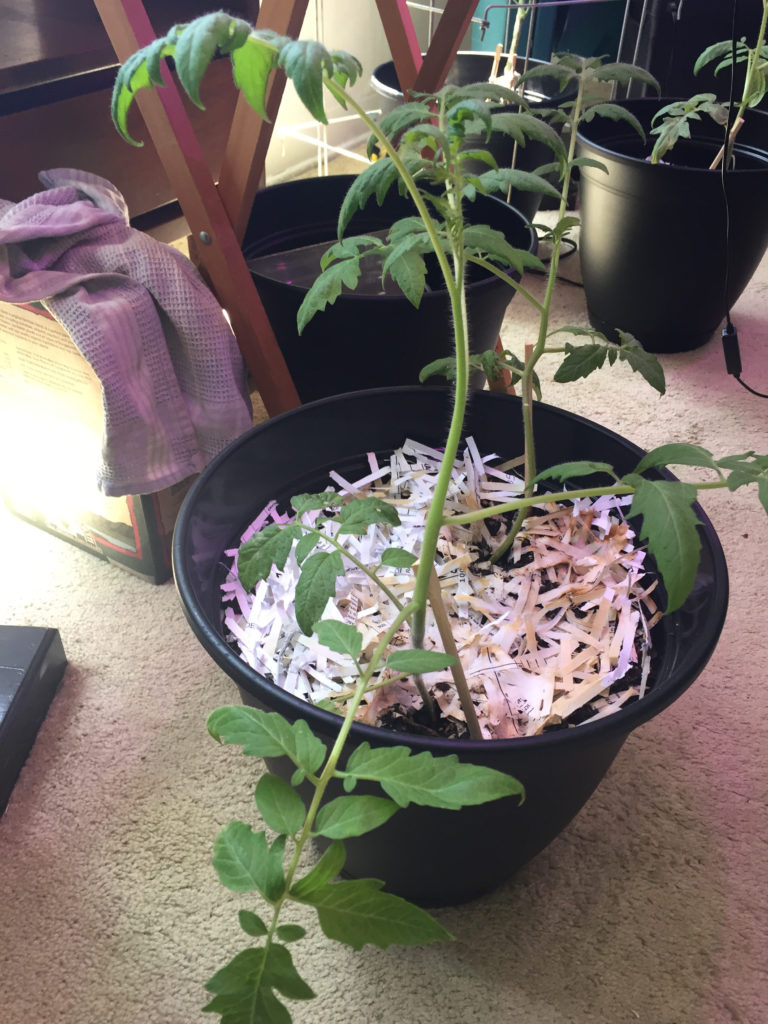
Will they still fruit after cloning, re-rooting and their initial shocks? It is too soon to tell, but we are hopeful that this experiment in growing (and trying to clone) tomato plants in pots from cuttings is successful.
Stay tuned as we report back from our adventures in indoor container gardening.
